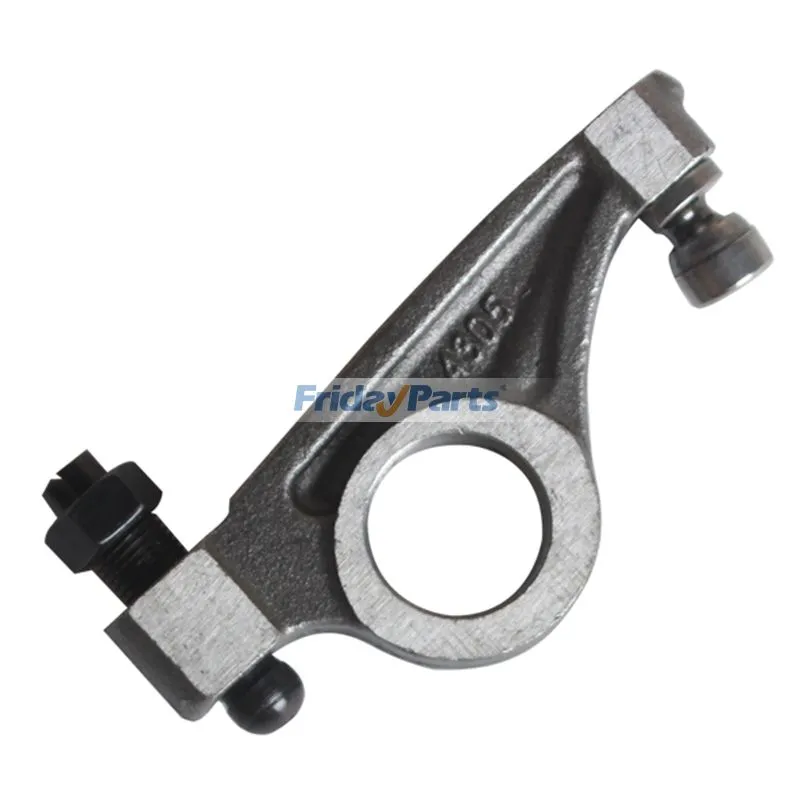An engine in your heavy machinery includes many parts, a rocker arm is one of them. It is a mechanical component in an internal combustion engine and has a wide application on engines without overhead camshafts. It acts as a lever, converting the camshaft’s rotational movement into the up-and-down motion needed to open and close the engine’s intake and exhaust valves.
A proper rocker arm plays an important role in keeping the engine running smoothly. A bad one causes serious drivability issues. If it is loose or broken, it disrupts valve operation, thus directly impacting the engine’s performance.
In this blog, we will focus on the signs of damage to the rocker arms and practical suggestions will be provided for repair or replacement.
Signs of Rocker Arm Failure
It is important to know these failure signs, if you ignore them, the bad one can render your vehicle undrivable. Here are some notable signs:
Engine Misfire
Many component failures could lead to engine fire. For example, Worn or damaged spark plugs can fail to ignite the air-fuel mixture properly. Also, Clogged or leaking fuel injectors can disrupt the fuel supply to the engine……A failed rocker arm is one of the many reasons. Since it helps control the engine’s fuel combustion, a damaged one can lead to misfires or engine stalling, affecting overall performance.
Clicking or Ticking Noises
If you search rocker arm issue online, it is not hard to find that many forum posts are discussing the abnormal noises. One of the most common bad signs is a clicking or ticking noise coming from the engine. This sound often comes from the top of the engine. However, other components, like the hydraulic lifter, can produce similar noises, so it’s best to have a mechanic inspect it for a proper diagnosis.
Illuminated Check Engine Light
A damaged rocker arm may trigger the check engine light. Trouble codes like P2647 and P2646, related to electronically controlled rocker arms, can indicate problems. It’s important to get the codes scanned to determine the exact issue.

Replacing Rocker Arm (Step-by-Step)
Before replacing, it’s important to identify the type you need. There are three main types based on how they’re made: forged, cast, and stamped steel. The forged is the strongest, featuring bushings and bearings to reduce friction and improve durability. Cast rocker arms are not as strong but are suitable for regular passenger vehicles and come at a lower cost. Stamped steel is the most lightweight and cost-effective option. Once you’ve identified the right type, you can move forward with the replacement.
Preparation
Tools:
- Wrenches
- Socket wrenches
- Screwdrivers
- New rocker arm
- Any other necessary accessor
1. Disconnect the Battery
To prevent accidental starting or electric shock, disconnecting the battery is one thing to keep you safe.
2. Remove the Cylinder Head
Use your tools to carefully detach the cylinder head and expose the rocker arm assembly. Remember to keep all screws and gaskets safe during removal.
3. Check Components
After removing the cylinder head, inspect the rocker arm and push rod. If the push rod is worn or bent, replace it as well.
Replacing
1. Loosen Bolts
Start by loosening the bolts on the rocker arm bracket.
2. Replace
Loosen the screws of the rocker arm bracket, remove the old one, and install the new one. Make sure it is aligned with the valves and push rods during installation.
3. Adjust the Gap
Adjust the clearance between the rocker arms and the valves (if necessary). Refer to the vehicle’s service manual to determine the correct clearance value.
4. Reinstall the Cylinder Head
After completing the replacement, install the cylinder head and other removed parts in order, making sure all screws are securely in place.
5. Check and test
Reconnect the battery and start the engine to check for any abnormal noise or vibration. If there is any abnormality, it may be necessary to readjust the rocker arm clearance or check other related parts.
How Much Does It Cost to Replace It?
Speaking from a general industry speaking, on average, replacing a rocker’s arm typically costs between $500 and $1,500. This includes parts and labor. The rocker arm itself might cost anywhere from $15 to $100 per unit, but labor charges, which can range from $300 to $1,200, make up the bulk of the expense due to the time and complexity involved in accessing and replacing the part. But if you choose to DIY, You can save a bunch of money by these repair steps above, check out the rocker arm price list for your equipment.
Where to Buy Rocker Arm?
If you are looking for a cost-effective DIY solution, it is wise to get an OEM-grade rocker arm from FridayParts.com at competitive prices. With a wide range of heavy equipment types and brands for your consideration, so you can find what you need here and enjoy fast delivery.
